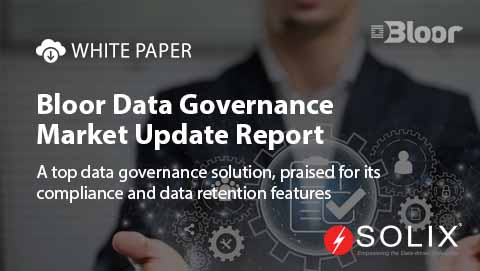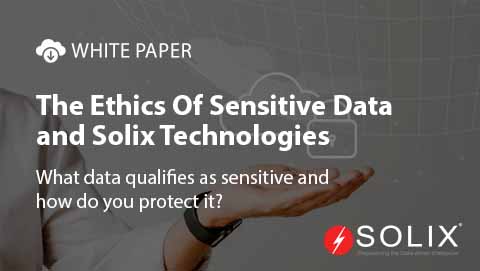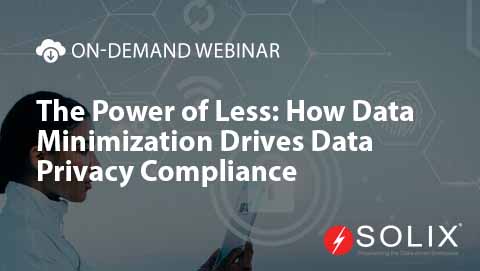data governance implementation steps
Hey there! Im Sandeep, and today were diving into a topic thats quickly climbing the charts of organizational priorities the data governance implementation stepsYou might ask, why are these steps so crucial Well, as companies increasingly depend on data to drive decisions, understanding how to govern it properly is a no-brainer. Simply put, data governance establishes the guidelines and frameworks ensuring your organizations data is accurate, secure, and, importantly, accessible for strategic use. And lets not forget, effective data governance can also bring your organization closer to the cloud, assisted by solutions like those offered by Solix.
Data governance covers a broad territoryfrom defining policies to managing quality and compliance. But where do you start In this blog, well break down actionable insights through the lens of a practical scenario. Trust me, by the end of this read, youll understand not just the theory behind these steps but also how they can translate into practice with the right tools at your disposal.
To illustrate the significance of these data governance implementation steps, lets consider a scenario most of us can relate to. Say youre part of a mid-sized organization thats sitting on massive amounts of customer data, but you lack a solid framework for managing it. Data privacy regulations are tightening, and the potential for breaches or mishaps keeps you up at night. Suddenly, decision-making grounded on data starts feeling less like a blessing and more like a curse, right
This is where adhering to structured data governance implementation steps comes in. First, you must define clear data policies. This involves determining how data should be collected, processed, and stored. Think of it as setting the rules for a gameeveryone needs to know whats expected to play effectively. A solution from Solix, like their metadata management tool, can help in creating and enforcing these policies, ensuring that everyone across the organization understands the data landscape and governance rules.
Next up is fostering a culture of accountability. For every piece of data you manage, there should be a designated owner responsible for its integrity. This step is crucial not just for managing quality but also for ensuring that everyone is aware of their role in safeguarding the datathis ties back nicely to creating well-defined frameworks.
Then comes the all-important phase ensuring data quality. After all, what good is data if it isnt accurate or up-to-date Regular audits and quality checks can help maintain data integrity. Your Solix tools can automate many of these processes, making it easier to focus on what truly mattersusing that good, clean data to propel your organization forward.
Moving on, compliance is non-negotiable. With so many regulations dictating data management, your organization must stay informed and aligned with legal standards. This can feel overwhelming, especially for smaller organizations that may not have dedicated compliance teams. Here, a robust data governance solution comes into play, enabling you to track compliance while simplifying your workflow. If youre struggling with navigating compliance obligations, Solix specialized tools can streamline this process, mitigating risk while offering peace of mind.
Now, lets circle back to our scenario. By integrating these data governance implementation steps, youre not only establishing a solid framework but also paving the way for smarter decision-making. Your companys operational efficiency improves, and risks related to data breaches decreasetwo outcomes every organization aspires to achieve.
A recent research report illustrated that companies that invested in strong governance saw enhancements in their operational efficiency leading to a direct improvement in their bottom line. Its the kind of evidence that should send a wake-up call to organizations ignoring these steps. Performance gains from governance frameworks translate to more effective use of resources, encouraging growth and scalability.
Ive been entrenched in data governance for years, shaping and implementing strategies that suit different organizational structures. My experience has been a journey of learning and sharing insights, which I happily document here at Solix.com. The essence of the data governance implementation steps is one that I personally resonate with, as each step branches into countless opportunities for innovation and improvement.
So, if youre ready to elevate your organizations data governance, I invite you to explore the solutions offered at SolixBacked by sophisticated technology tailored around data governance implementation steps, these tools can assist your organization in creating robust frameworks that simplify compliance and enhance data quality.
As I wrap up, the future isnt waiting, and neither should you. Take the proactive step of reaching out to us at Solix to dive further into discussions about your data governance needs. Call us at 1-888-GO-SOLIX (1-888-467-6549) or visit our contact page for more information. The right conversation could very well pivot your organization towards success.
In closing, remember that effective data governance implementation steps are more than just guidelinestheyre stepping stones towards making informed, data-backed decisions that can drive your organization forward. Dont forget to sign up on the right for a chance to WIN $100 by exploring our solutions!
Disclaimer This blog reflects the personal opinions of Sandeep and does not necessarily represent the views of Solix.
Thank you for joining me on this exciting journey of understanding data governance and its implementation steps. Heres to making your organizations data more structured, compliant, and productive!
-

-

-
 On-Demand Webinar
On-Demand WebinarThe Power of Less: How Data Minimization Drives Data Privacy Compliance
Watch On-Demand Webinar
